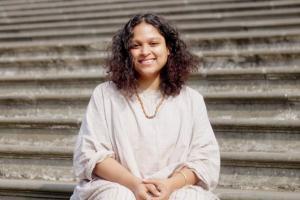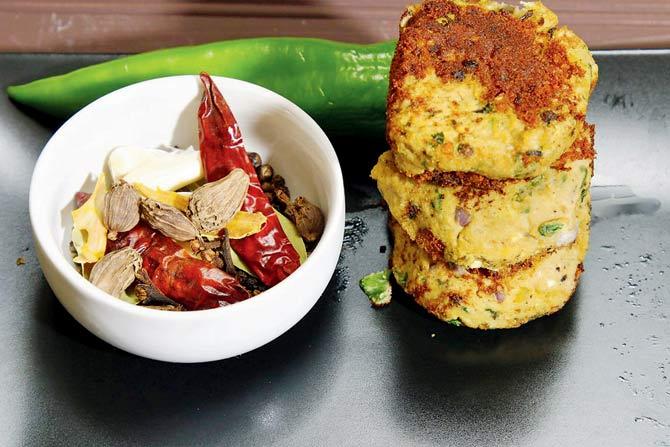A food historian goes beyond the tables of badshahs and sahibs to decode what the common man ate in the Mughal and post-Mughal colonial India. And it's not starkly different from what we eat today

Shubra Chatterji channeled her research into Mughlai food for commoners for a recent talk at a food conference. Pic/ Ashish Raje
When we think Mughlai food, we think rich eats ranging from galouti kebabs to biryani and korma. Television producer, director, writer, and founder of food blog Historywali, Shubra Chatterji travelled the length and breadth of the country, shooting people in their homes to trace and document the food habits of people during the Mughal era.
ADVERTISEMENT
"If you eat a particular food, it says something about where you come from, your ancestry, who you are. The Mughal period spanned 1530 to 1857, with the last 100 years being considered as the post-Mughal era, after the emergence of the East India Company, along with the Dutch, Portugese and French colonists. Over the next couple of centuries, a lot of new foods came to India, including potato, tomato and chilli, which are now a staple in Indian homes," says Chatterji, adding, "This was also a period when documentation was on a high due to what was recorded as part of court documentation."
But, most Mughal texts focus on royal life, and foods whenever mentioned, only illustrate elaborate feasts and the workings of imperial kitchens. "There was always a connection to royalty. We didn't have any recipes used by commoners," she adds. Chatterji says that by the late 1800s, women began to turn to education and that was the start of literary texts surrounding food. "This is when we so we see the emergence of recipe books."

Folk art, including Warli paintings, show deer being hunted. Poems, especially by Ghalib, describe shami kebabs
At a two-day conference organised by the Kama Institute of Oriental Studies in Kala Ghoda, Chatterji presented a paper that focussed on the sources to study the common man's diet in the Mughal period. First, she researched prominent Mughal chronicles, Baburnama and Ain E Akbari. She found scant descriptions that helped her make a start. "The main diet of the people then comprised eggplant, fish and rice. Rice was cooked on one day and eaten the next; similar to Pakhala in Odisha today. Khichdi was also important, and finds mention in several texts, especially for the military troops, who survived on it instead of meat."
Travellers' accounts were another clue. And art, with illustrations of dishes and utensils. "A painting in the Victoria and Albert museum depicts a poor pilgrim in Ajmer being given food, with boondi and kachori clearly visible in the picture. We also find different fruits, like pomegranate, in inlay work in architecture; and folk art, including Warli paintings, show deer being hunted. Poems, especially by Ghalib, describe shami kebabs. There was food for feasting and fasting, and the latter didn't use tomatoes," she shares.
The biggest misnomer is that the Mughal diet was predominantly non-vegetarian. There are entire sections in the Ain E Akbari, dedicated to vegetarian recipes made for days of abstinence, with Akbar banning the consumption of beef during the time. Also, their food was very delicately prepared and not heavily spiced.
Chatterji adds that we continue to consume a lot of what they ate back then, but preparation methods have changed.

The nutritious khichdi was an important food and finds mention in several texts
And, we've added potato, tomato, onion to our diet.
While pepper was used to spice foods, we now use more chilli. They also ate the humble dal-chawal, but an even simpler preparation. " We are now slowly discovering the benefits of original methods and moving back to basics.
Over the last five years, the food conversation has surrounded heirloom family recipes.
The common man didn't have much back then, there was abject poverty. The poor were very poor, and their food was not elaborate. They ate maacher jhol bhaat (fish-curry-rice).
And food wasn't a conversation starter like it is now."
Catch up on all the latest Mumbai news, crime news, current affairs, and also a complete guide on Mumbai from food to things to do and events across the city here. Also download the new mid-day Android and iOS apps to get latest updates
 Subscribe today by clicking the link and stay updated with the latest news!" Click here!
Subscribe today by clicking the link and stay updated with the latest news!" Click here!






